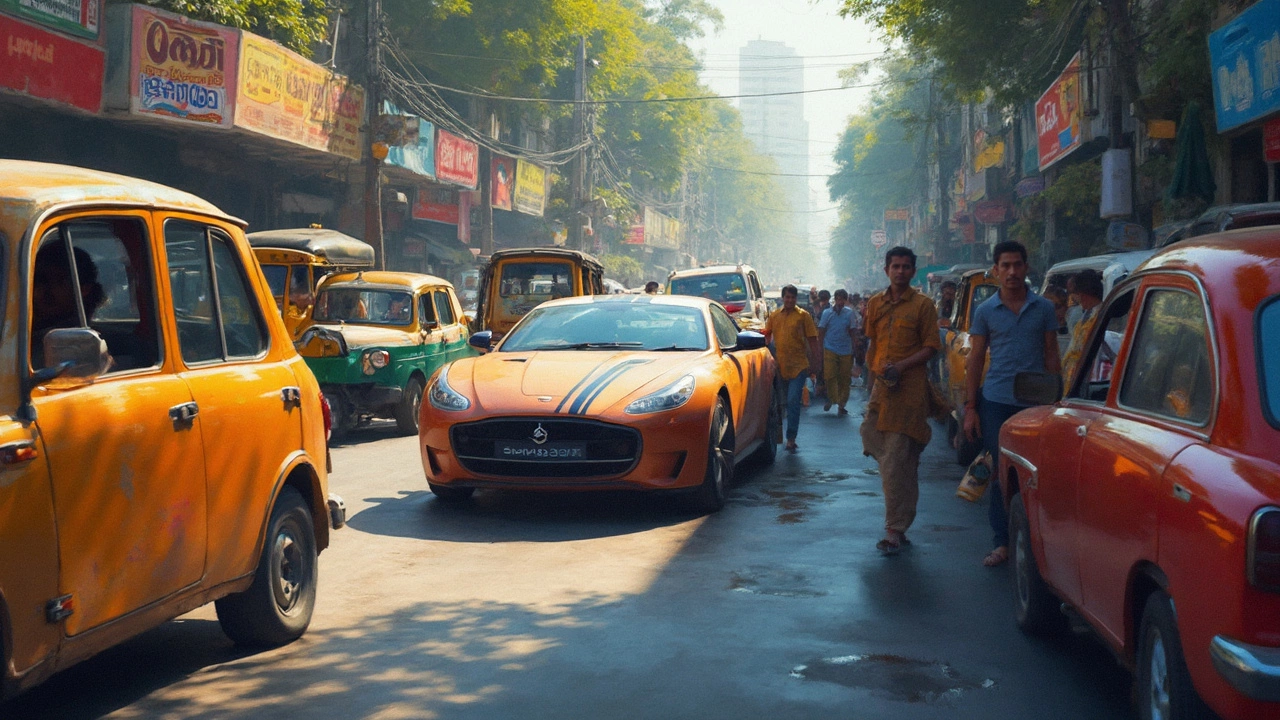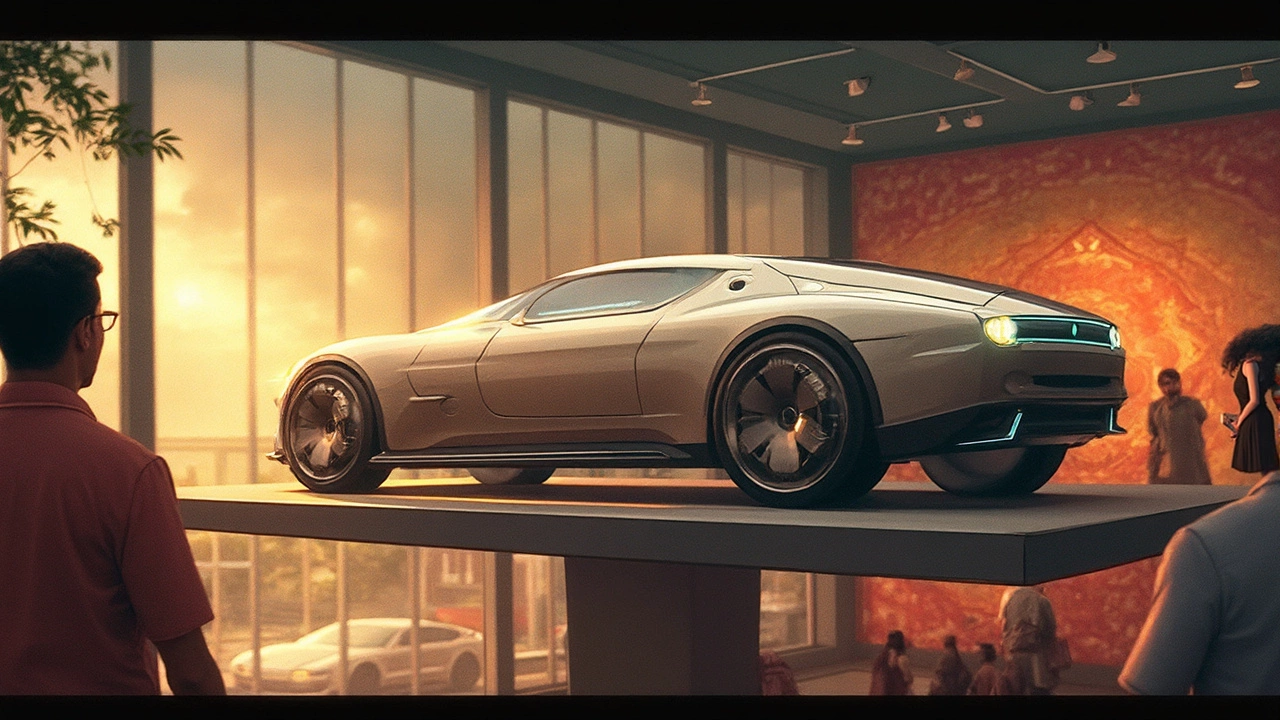 Mar, 4 2025
Mar, 4 2025
When you think about cars that didn’t quite make it in India, a bunch of stories come up. It's not always the flashy design or the big marketing campaigns that decide the fate of a car. Sometimes, it’s the small things like pricing missteps or mistiming market entries.
The Indian automobile scene is competitive. Buyers here are smart; they hunt for value, durability, and features. If a car misses even one of these, it might end up having a tough time. It’s fascinating how a car that’s a huge hit elsewhere might completely bomb in India—just because it doesn’t resonate with local tastes or needs.
Things like stringent emission norms, rising safety standards, and the evolving preference for smarter vehicles keep auto manufacturers on their toes. Some cars just couldn’t adapt, which is something we'll delve into.
- Understanding the Indian Car Market
- What Leads to a Car’s Failure?
- Notable Failures in Recent Years
- Learning from Past Mistakes
- The Road Ahead for Manufacturers
Understanding the Indian Car Market
The Indian car market is like no other. It's diverse, fast-paced, and driven by a unique mix of consumer needs and preferences. If you want to launch a car here, you've got to know the ropes.
What Makes It Tick?
First off, price and value are kings. Indian buyers are always on the lookout for a good deal. That doesn't mean they just want cheap cars; they demand quality at an affordable price. Add to that, the importance of fuel efficiency can’t be stressed enough, given the ever-rising fuel prices.
Shifting Gears: Trends and Preferences
The trends are also changing rapidly. Compact SUVs are the current favorites, thanks to their blend of style, comfort, and performance. At the same time, more people are becoming environmentally conscious, which is pushing the demand for electric vehicles. However, the infrastructure for EVs is still catching up.
Challenges and Opportunities
The car market in India faces a few challenges. There's stiff competition with both established manufacturers and new players entering the scene regularly. Regulatory hurdles like emission norms are getting stricter every year, pushing companies to innovate consistently.
Local Insights
Understanding the regional diversity is crucial too. A car that sells well in urban centers may not find takers in rural areas, simply due to differences in road conditions and available features. Local tastes greatly influence what works and what doesn’t.
| Key Metrics | 2019 | 2023 |
|---|---|---|
| Total Car Sales (millions) | 3.8 | 4.4 |
| Market Growth (%) | 5.6 | 6.2 |
There's plenty of opportunity here, but you've got to listen to the market and keep adapting. Recognizing trends and anticipating consumer shifts can be the difference between a big hit and a failed car in India.
What Leads to a Car’s Failure?
When it comes to understanding why a car doesn't succeed in India, a few common culprits often stand out. Some of these issues are specific to the Indian car market, while others are universal across the globe. Let's break down these factors.
Price Tag that Doesn’t Match Value
One of the biggest mistakes manufacturers make is setting a price that doesn’t match what consumers perceive as value. With a market as price-sensitive as India’s, a misstep here can lead to a total flop. If customers don't feel they're getting enough bang for their buck, they'll quickly turn to competitors offering more features at better rates.
Absence of Local Adaptation
Manufacturers sometimes introduce models without considering local preferences or conditions. Think of things like climate suitability or road conditions. A car with a super low ground clearance might look great, but it won’t work well on India's bumpy roads. Similarly, if the air conditioning isn't up to the mark, it becomes a hard sell in the sweltering Indian summers.
Lack of Brand Recognition or Trust
In a market flooded with established companies, new entrants often struggle with brand recognition and trust. Without a legacy of reliability, even a car market entry with all the right features can face hurdles if buyers aren't confident about after-sales service or long-term reliability.
Missing the Feature Mark
Features matter here more than anywhere. From touchscreen infotainment to safety enhancements like airbags and ABS, Indian consumers look for the latest tech. If a car lacks these key aspects, it risks being overlooked. Also, with rising safety standards, a lack of compliance can result in immediate disqualification from a potential buyer's list.
Competition Blind Spots
When entering the Indian car market, understanding the competition is crucial. Some new models fail simply because they don't offer anything new over existing options. It's not just about being good; a new car has to be better in some way—whether it's performance, tech improvements, or cost efficiencies.
Here's a quick look with some hypothetical numbers to give you an idea:
| Factor | Impact on Sales (Hypothetical %) |
|---|---|
| Misaligned Pricing | 30% |
| Poor Adaptation to Local Needs | 20% |
| Low Brand Trust | 25% |
| Lack of Features | 15% |
| Underestimating Competition | 10% |
Failing in any of these areas can tip the scales unfavorably, leading to a car being labeled a failure. Knowing these factors can help manufacturers better prepare their strategies and avoid repeating these mistakes in future models.

Notable Failures in Recent Years
The Indian car market can be brutal, and several cars have witnessed unexpected failures. They started with great hopes, only to end up as cautionary tales for manufacturers.
1. Tata Nano
The Tata Nano was projected as the "People’s Car" and arrived with significant buzz. It aimed to attract two-wheeler owners by promising four-wheeler comfort at astonishingly low price. Yet, challenges such as a perceived lack of safety and inadequate marketing as an aspirational car led to its decline.
2. Renault Captur
The Renault Captur was introduced as a premium SUV but had trouble convincing the audience. Inconsistent pricing and Indian buyers' preference for more familiar and practical models were among the fun-killers.
3. Ford Fiesta
Ford's Fiesta is a surprising mention here given its success in other countries. Pricey repairs, poor mileage compared to competitors, and a lack of key features like spacious interiors made buyers look elsewhere.
4. Nissan Sunny
The Nissan Sunny boasted of space and comfort but failed on looks and brand perception. Launched in 2011, it couldn’t stay afloat in the game dominated by players with stronger brand loyalty.
| Car Model | Launch Year | Key Reason for Failure |
|---|---|---|
| Tata Nano | 2008 | Safety concerns and poor positioning |
| Renault Captur | 2017 | Lack of customer appeal |
| Ford Fiesta | 2011 | High maintenance cost |
| Nissan Sunny | 2011 | Aesthetic and brand issues |
These examples teach one thing: understanding the market is crucial. Brands must align with what Indian consumers value the most to thrive.
Learning from Past Mistakes
Taking lessons from previous stumbles is crucial for car manufacturers looking to establish a foothold in the challenging Indian market. What's interesting is that the reasons behind car failures are often identifiable and avoidable. Let's dive into some lessons that manufacturers should take to heart.
Getting Pricing Right
Pricing has often been a sticky issue for failed cars India. Many manufacturers either overestimate the spending capacity of Indian consumers or fail to offer a competitive price compared to established brands. Ensuring that the pricing aligns with what buyers are willing to pay for the features provided is a vital step toward success.
Focus on Features
Features are another area where cars have faced setbacks. A lack of modern amenities or safety features can turn consumers away. Keeping an eye on what’s trending is essential, and ensuring that features enhance the driving experience can make all the difference.
Market Research Is Key
Understanding regional preferences and needs can help tailor the product better. Cars that thrive elsewhere might struggle in India due to different consumer expectations or usage patterns. Companies need to invest in solid market research to develop vehicles that truly meet local demands.
Look at Competitors
Competition is fierce, with many brands jostling for top spots. Knowing what competitors offer and how new models stack up can prevent costly missteps. It pays to keep an eye on the competition, ensuring the product stands out meaningfully.
Adapting to Regulations
Indian regulations are evolving, pushing for higher emissions standards and safety norms. Cars that didn’t keep pace found themselves outdated quickly. Staying ahead by adapting to these regulations can help prevent failure.
Here's a quick look at how two failed models could have tweaked some aspects:
| Car Model | Lesson Learned |
|---|---|
| Renault Lodgy | Needed better fuel efficiency and spacious interiors to compete in the Indian MPV market. |
| Tata Nano | An ambitious idea offering affordability but missed on consumer aspirations for style and features. |
Reflecting on these mistakes, brands can pivot towards strategies that better align with market expectations, steering clear of the pitfalls that led to past failures.

The Road Ahead for Manufacturers
For car manufacturers eyeing the Indian market, the key to avoiding the fate of failed cars in India is tapping into the diverse landscape of preferences and demands. It’s a market where being in tune with customer expectations and market dynamics is crucial.
Understanding the Local Audience
The diversity in customer preferences across India is immense. From families looking for spacious SUVs to young professionals wanting tech-loaded hatchbacks, understanding these nuances is essential. Investing in local research and hosting interactive focus groups can provide insights into these varied needs.
Keep an Eye on Pricing
Price sensitivity is a well-known trait among Indian consumers. Manufacturers need to find a balance between costs and features. A car can have cutting-edge tech, but if it doesn’t fit into the average buyer's budget, it's destined to struggle.
Embracing Sustainability
India's shift towards greener technologies is picking up pace. Transitioning to electric and hybrid models, while ensuring there's ample charging infrastructure, isn’t just about adhering to new regulations—it’s about future-proofing products.
| Year | Electric Vehicles Sold (Units) |
|---|---|
| 2023 | 207,110 |
| 2024 | 250,560 |
With data showing a steady increase in electric vehicle sales, it’s clear that the direction is set.
Boosting Local Manufacturing
Building cars locally not only reduces costs but also wins consumer trust. 'Made in India' gives a solid marketing advantage. Plus, local manufacturing opens job opportunities, fostering a positive brand image.
Continuous Evolution
The car market in India is evolving swiftly with digitalization and automation trends. Staying updated with these technologies and implementing them in upcoming models can provide an edge.
At the end of the day, avoiding a flop in such a vibrant market comes down to being adaptable. As demands shift, so should manufacturers, ensuring they keep pace with what Indian consumers are ready to embrace.